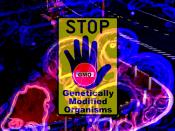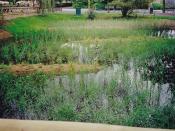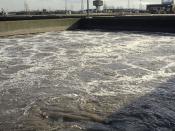Yuan Yao
Mrs. Michelman
AP Environmental Science
Chapter 4 HW
1. Ecology is the study of how organisms interact with one another and with their nonliving environment. In effect it is a study of connections in nature. Ecologists focus on trying to understand the interactions between organisms, populations, communities, ecosystems, and the biosphere. An organism is any form of life. A population consists of a group of interacting individuals of the same species that occupy a specific area at the same time. Populations of all the different species occupying a particular place make up a biological community. An ecosystem is a community of different species interacting with one another and with their nonliving environment of matter and energy. All of the earth's ecosystems together make up what we call the biosphere.
3. The lithosphere is the earths crust and upper mantle; the crust contains nonrenewable fossil fuels and minerals we use as well as potentially renewable soil chemicals nutrients needed for plant life.
The hydrosphere consists of the earth's liquid water both surface and underground, polar ice, icebergs, and ice in frozen soil layers, or permafrost, and water vapor in the atmosphere. The atmosphere is a thin envelope of air around the planet. The ecosphere (biosphere) is the portion of the earth in which living biotic organisms exist and interact with one another and with their nonliving abiotic environment.
The sun is a middle-aged star whose energy lights and warms the plant. It supports photosynthesis. It also powers the cycling of matter and drives the climate and weather systems that distribute heat and fresh water over the earth's surface. Gravity allows the planet to hold onto its atmosphere and causes the downward movement of chemicals in the matter cycles. Essentially all the nutrients used by organisms are already present on...


